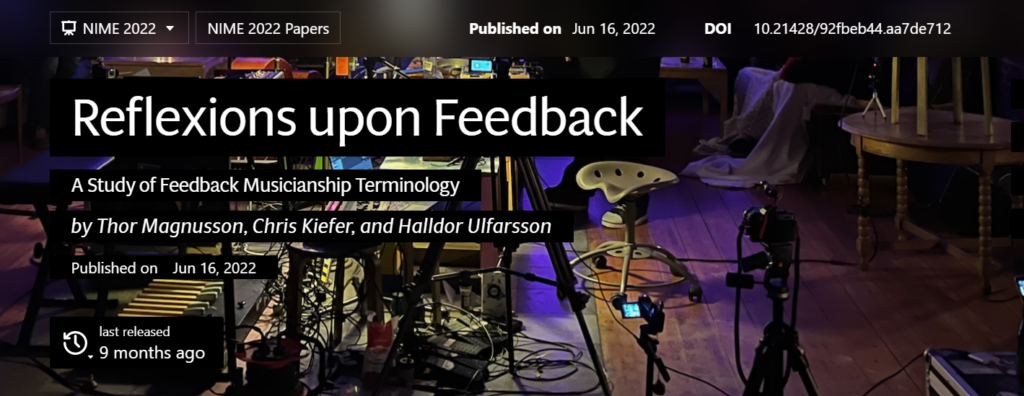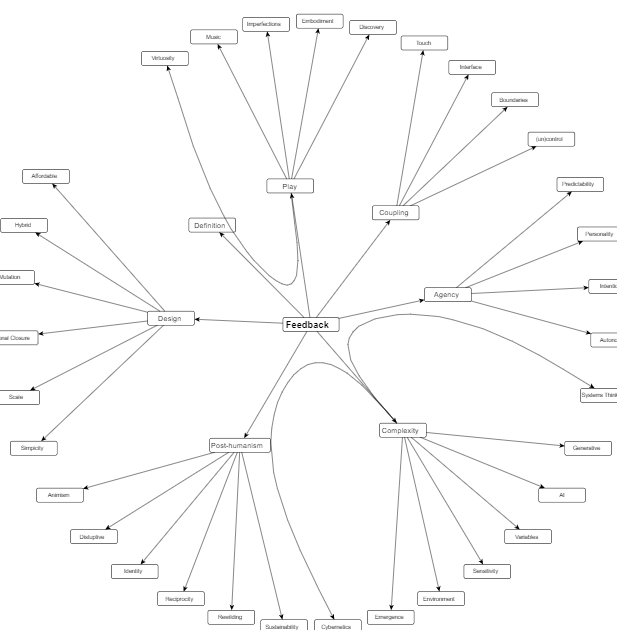
The paper examined the concept of feedback musicianship, which involves the use of feedback in musical performance and composition. The authors of the paper were inspired by Bebe and Louis Barron’s cybernetic explorations, the screaming sound of Jimi Hendrix’s guitar, and the systems design of David Tudor or Nic Collins. The Barrons were a husband and wife duo who pioneered electronic music, creating custom-built instruments to explore the relationships between machines and humans. Jimi Hendrix was an influential guitarist known for his use of feedback and distortion. David Tudor was a composer and performer who worked with electronic music and designed instruments and systems, often collaborating with John Cage. Nic Collins is a composer and performer who works with homemade electronic instruments and circuits and wrote a book on the intersection of DIY electronics and experimental music.
To gain insight into their practice and the underlying theoretical framework, the authors interviewed a group of contemporary feedback musicians. They discovered that feedback musicianship has evolved over time, influenced by scientific and theoretical ideas of the time, and that today’s feedback musicians are interested in exploring systems, agency, design, complexity, and post-human (as one of the interviewees was reported to have said “I’m interested in the instrument being in the way of my intent”) in their work.

The discussion of post-humanism and the de-centering of humans in global ecology systems is an intriguing aspect of the paper. According to the authors, this trend is related to the renewed interest in building feedback systems as an artistic practice. The interviewees expressed a desire to relinquish control over their performances, preferring to play “with” rather than “on” an instrument.
However, some of the paper’s proposals may be impractical in practice. For example, many musicians may find it difficult to abandon traditional musical values such as virtuosity and mastery. Additionally, while the authors suggest that the new complexity science is the current theoretical framework of feedback musicianship, it is unclear how widely this approach is adopted in practice.
In conclusion, the paper offers an intriguing examination of feedback musicianship and its evolution over time. While some of the ideas presented may not be feasible or widely adopted, they do provide an intriguing starting point for further discussion and exploration of the subject.